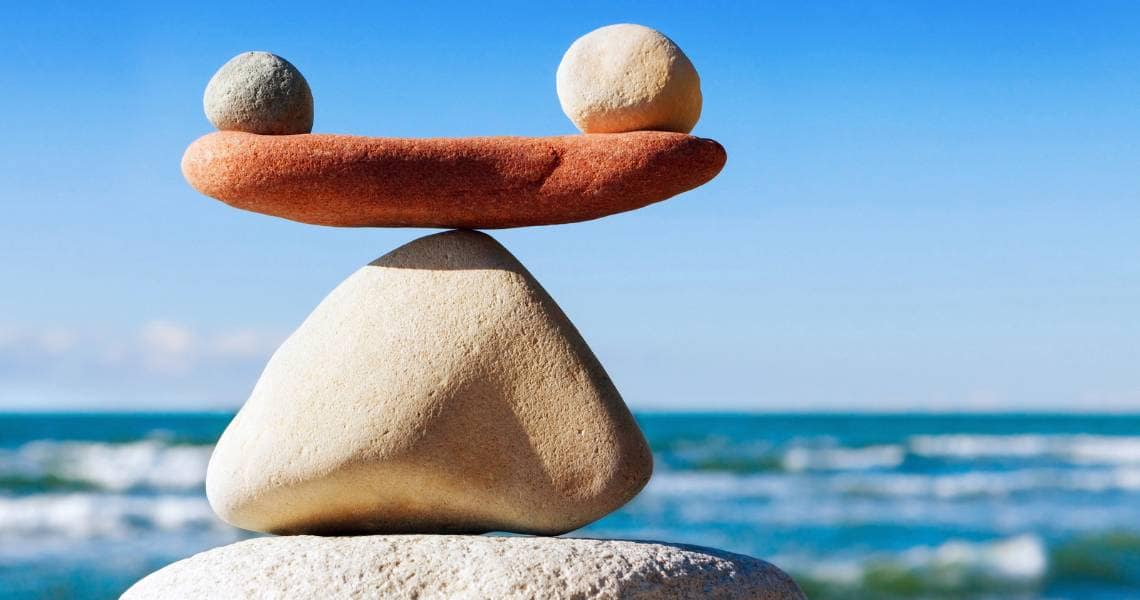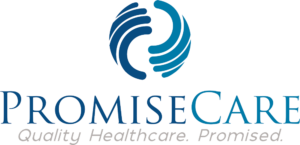
As you navigate the complexities of balancing your professional life with personal pursuits, especially as you approach or enjoy your golden years, it’s crucial to make mindful decisions that foster a fulfilling lifestyle. For those of us aged 50 and older, maintaining a healthy work-life balance involves not just managing time but prioritizing activities that nurture both physical health and mental well-being.
Setting clear boundaries at work becomes even more significant as you might be contemplating a transition into retirement or adjusting to a part-time role. It’s essential to communicate your needs effectively with employers and colleagues, ensuring they respect your time and contributions.
Dedicating specific times for self-care is also pivotal. Whether it’s engaging in low-impact exercises like yoga or walking, these activities not only keep you physically fit but also provide valuable mental health benefits. Regularly scheduled wellness checks are equally important to monitor and manage any age-related health conditions, ensuring you stay at the top of your game.
Understanding when to say no is a powerful skill at any age. As you grow older, it becomes crucial to prioritize your health and interests over additional responsibilities that do not align with your personal goals or well-being.
Incorporating these strategies will help prevent burnout and keep you both productive and joyful. Adapt these principles to your life circumstances, and you’ll see how minor adjustments can significantly enhance your quality of life.
Engage in community activities that align with your interests, such as book clubs, gardening societies, or volunteer groups, which provide social support and a sense of belonging.
Through this approach, you are not just finding a balance but also embracing a lifestyle that values and respects your needs as a mature individual. This not only maintains your productivity but also enriches your daily life, leaving you informed, respected, and empowered.
Main Points
- Define work boundaries to better enjoy retirement: Set specific times for volunteer activities or part-time work commitments, ensuring ample time to relax and engage in hobbies.
- Organize daily activities with an emphasis on personal priorities: Use to-do lists to balance household tasks, healthcare appointments, and social engagements, categorizing them by urgency and importance.
- Incorporate physical activities suitable for those over 50, such as swimming, light gardening, or tai chi, to reduce stress and enhance physical well-being.
- Set technology guidelines to decrease screen time, which can improve sleep quality and increase face-to-face interactions with friends and family.
- Maintain a balanced diet rich in nutrients essential for those over 50, and keep regular appointments for health screenings to monitor and manage any age-related health conditions.
These adapted strategies focus on maintaining an active, engaged lifestyle while managing health and personal fulfillment, tailored specifically for those in their 50s and beyond.
Understanding Work-Life Balance

Achieving a balanced lifestyle between your professional responsibilities and personal life is crucial, especially as you navigate the unique challenges and transitions that come with being over 50. Whether you’re planning for retirement, managing age-related health issues, or exploring new leisure activities that fit your lifestyle, maintaining this balance is essential for your mental health and overall well-being.
Understanding work-life balance for those aged 50 and older means recognizing the signs that work may be overwhelming your time and energy that could be better spent on health maintenance or enjoying well-deserved leisure activities. It’s about setting clear boundaries to ensure you’re not perpetually on call, and that your time off is genuinely yours to enjoy and relax.
Consider this: maintaining a healthy personal life and mental well-being significantly enhances your ability to tackle daily challenges with a clear, focused mind. This can be particularly important as you manage your health and plan for the future. Prioritizing your well-being isn’t just sensible—it’s strategic. By establishing boundaries and focusing on your health, you set yourself up to live a more fulfilling and vibrant life.
Here are some practical tips tailored for those in their 50s and beyond:
- Engage in fitness activities suitable for your age and health, such as brisk walking, yoga, or swimming, to stay active and energized.
- Eat a balanced diet rich in nutrients that support cognitive function and overall health, and consult with a nutritionist to tailor your diet to your specific health needs.
- Familiarize yourself with healthcare services and benefits, including Medicare and supplements, to make informed decisions that ensure your health is in good hands.
Achieving a work-life balance at this stage isn’t just about reducing stress; it’s about enhancing your life’s quality and ensuring you have the energy and health to enjoy this chapter of your life fully. By following these guidelines, you can look forward to a lifestyle that respects your needs, enriches your well-being, and keeps you engaged and active in your community and personal interests.
Importance of Balance

Understanding the importance of balance becomes increasingly vital as we age. For those of us in our 50s and beyond, managing the demands of professional and personal life isn’t just about achieving work-life balance; it’s about preserving our mental health and enhancing our overall quality of life. With a significant number of professionals experiencing burnout at some point in their careers, it’s crucial to recognize that you aren’t alone in this journey. The impact is substantial, affecting not only individuals but also those who rely on us at home and in professional settings.
Consider this: individuals who maintain a good balance between work and life are often more productive and engaged. This improvement isn’t merely about feeling better—it’s about performing better. Reduced stress levels enhance your ability to contribute effectively both in the workplace and at home. You become more attentive, innovative, and capable of offering leadership and empathy. Thus, prioritizing work-life balance transcends personal benefit and becomes a strategic professional decision.
Moreover, the financial implications are significant. Mental health issues, often worsened by inadequate work-life balance, have a profound economic impact, costing billions annually. By implementing strategies to balance your life better, you actively contribute to a healthier economy while safeguarding yourself from burnout.
As we age, it’s essential to view work-life balance as a fundamental aspect of both personal well-being and professional success. As you continue to serve others, remember that maintaining your balance is a service to yourself and those dependent on you. Embrace strategies that partition your energies wisely, promoting sustainability in your career and peace in your personal life.
For those navigating the later stages of their careers or stepping into retirement, practical advice on maintaining health and vitality is key. Engaging in suitable physical activities, understanding nutritional needs, and managing any chronic conditions are all critical components of staying active and healthy. Ensuring you’re well-informed about healthcare options, including Medicare and supplementary plans, can also provide peace of mind.
This content aims to leave you feeling informed and empowered, respected for your life experiences, and equipped with practical knowledge to enhance your quality of life. As we share experiences and advice tailored to our unique needs in this stage of life, we build a supportive community committed to thriving at any age.
Signs of Imbalance

As you mature, maintaining a healthy balance between work and personal life becomes increasingly crucial. If you’ve noticed a decline in your job performance, it might be a signal that this balance is disrupted. This can be particularly significant as you approach or navigate retirement, when managing time should be geared more towards personal fulfillment and well-being.
For those of us in our 50s and older, it’s essential to keep an eye on how work impacts our enjoyment of life and overall health. If the hobbies and activities you once loved are no longer bringing you joy, it’s a valuable time to reassess your commitments. This isn’t just about reducing stress; it’s about enhancing the quality of your life during these golden years.
Increased stress can diminish work efficiency and have broader health implications, including exacerbating age-related conditions such as hypertension and diabetes. It’s important to address these stress levels not only to maintain your professional standards but also to safeguard your health.
Here are some practical tips to help you keep a healthy work-life balance:
- Prioritize Physical Activity: Engage in physical activities that are enjoyable and suitable for your age, such as walking, yoga, or swimming. This not only helps manage stress but also boosts your physical health.
- Healthy Eating: Focus on nutritious foods that fuel your body and mind. Incorporating fruits, vegetables, and lean proteins into your diet can have a substantial impact on your energy levels and overall health.
- Manage Health Proactively: Regular check-ups and understanding your medical entitlements, like Medicare and supplemental plans, are crucial. Stay informed about the healthcare services and benefits that are available to you.
- Cultivate Social Connections: Maintain and expand your social network. Engaging with community groups or finding new social hobbies can decrease feelings of isolation and increase your life satisfaction.
- Mindfulness and Relaxation: Techniques such as meditation, deep breathing exercises, or even reading can significantly reduce stress and improve your mental health.
Declining Job Performance
As you strive towards achieving your professional and personal goals, a decline in job performance can be a crucial signal, particularly as you approach or navigate your 50s and beyond. This stage often brings a unique set of challenges and changes, such as transitioning into retirement, managing age-related health issues, and balancing leisure with life’s responsibilities.
If you’re noticing signs like missed deadlines, increasing mistakes, or a growing dread about work, it’s essential to consider how these may be impacting your well-being and life satisfaction.
These indicators aren’t merely signs of being busy; they reflect a potential imbalance that could significantly affect your enjoyment and effectiveness in your role. With studies showing that 23% of employees experience decreased productivity due to stress, the impact on older adults can be even more pronounced, affecting both job satisfaction and health.
Furthermore, a poor work-life balance might lead to a 21% drop in job satisfaction and a 13% decline in work quality, intensifying the issue. For individuals in their 50s and older, these factors could accelerate the onset of burnout, with a reported 33% increase in risk if not properly managed.
Recognizing these early warning signs is crucial. Begin by evaluating your daily routines and priorities. Are you dedicating too much time to work at the expense of your health and personal life? Achieving a healthy balance is vital, not only for your career but also for maintaining the energy, passion, and creativity needed to enjoy this rich stage of life fully.
Here are practical steps you can take:
- Reassess Your Workload: Consider whether it’s time to delegate tasks or adjust your work hours, especially if you’re nearing retirement.
- Stay Active: Engage in fitness activities suitable for your age, like walking, yoga, or swimming, which can improve both physical health and mental clarity.
- Healthy Eating: Focus on a diet rich in nutrients that supports cognitive function and energy levels, crucial for maintaining productivity.
- Health Checks: Regularly consult with healthcare providers to manage any chronic conditions and to adjust health strategies as needed.
- Leisure and Relaxation: Prioritize activities that bring joy and relaxation, which are essential for a balanced life and can enhance your work performance.
Understanding and adjusting your work-life balance in your 50s and beyond isn’t just about sustaining job performance—it’s about enriching your overall quality of life, ensuring you remain productive, engaged, and healthy during this pivotal time.
Personal Life Suffers
Maintaining a strong focus on your career is commendable, but it’s equally important to ensure that your personal life doesn’t suffer as a result. For individuals aged 50 and older, balancing professional responsibilities with personal time is crucial, not only for mental health but also for physical well-being and maintaining meaningful relationships.
If you find it challenging to differentiate between work and personal life, it may be a sign that you need to reassess your priorities. You might notice a diminished interest in hobbies that previously brought you pleasure or find yourself withdrawing from social interactions with friends and family. These are significant indicators that your personal life could be impacted by excessive work commitments.
Recognizing these signs early is key to preventing more serious issues, such as chronic stress or depression. Reflect on your life—consider when you last took a break purely for relaxation and self-rejuvenation. Difficulty in taking time off for self-care is a common sign of an unbalanced work-life scenario, which can’t only affect your health but also strain relationships with loved ones.
For those in their 50s and beyond, achieving a healthy work-life balance isn’t just beneficial—it’s essential. It promotes better job satisfaction, ignites creativity, and most importantly, enhances overall happiness and health. Engaging in suitable leisure activities, like gentle fitness routines or social groups tailored to your interests, can significantly contribute to this balance.
Here are some practical tips to improve your work-life balance:
- Schedule Regular Check-ins with Yourself: Periodically review your schedule to ensure you have time reserved for rest and activities you enjoy.
- Engage in Physical Activities Suitable for Your Age: Consider low-impact exercises such as yoga, swimming, or walking, which are easier on the joints and can be both refreshing and invigorating.
- Prioritize Social Interactions: Stay connected with friends and family through regular gatherings or digital communication, especially if physical meetings are challenging.
- Explore New Hobbies: This can be an excellent time to explore interests that you may not have had time for earlier in your life, such as painting, gardening, or learning a musical instrument.
- Stay Informed About Health Care Options: Understanding your healthcare coverage, including Medicare and supplements, is crucial as it can significantly impact your financial and physical health.
Increased Stress Levels
Elevated stress levels can often be an indicator that the balance between your personal and professional life may need adjustment, particularly as you navigate the complexities of life over 50. When your days are filled with commitments to others, it’s crucial to remain vigilant about your own health and well-being. Overlooking the signs of stress can negatively impact your mental health and lessen your capacity to care for others effectively.
Chronic stress in the setting of an unbalanced work-life situation can present itself in various concerning ways, tailored to your stage in life. Here are key indicators to watch for:
- Emotional Signs: You may find yourself feeling increasingly overwhelmed or irritable, or perhaps you’re experiencing a general sense of anxiety more often. These emotional reactions can progress into more serious conditions such as anxiety or depression if not addressed.
- Physical Symptoms: Look out for headaches, muscle tension, or gastrointestinal problems, which are common physical manifestations of stress. Changes in sleep patterns, such as insomnia or excessive sleeping, are also significant indicators that your body is under stress.
- Mental Effects: If you’re having trouble concentrating, feeling persistently sad, or feel detached, these could be signs that your mental health is being affected, which can impact both your professional performance and your personal interactions.
It’s essential to recognize these symptoms early to maintain your health and continue to be a support system for others. If you’re noticing these signs, consider consulting a healthcare professional.
Managing stress effectively is crucial, especially as you consider the unique health challenges and changes that come with being over 50.
Additionally, embracing a balanced diet, engaging in physical activities suited to your abilities and interests, and understanding how to navigate healthcare options can profoundly influence your quality of life.
Exploring leisure activities that bring joy and relaxation is equally important, as these can significantly reduce stress levels and enhance overall well-being.
Planning and Prioritization

Embarking on a journey toward a balanced life is particularly important as you enter your 50s and beyond. Setting clear goals is a fundamental step, helping you to focus on what truly matters during these enriching years. Whether these goals are related to maintaining your health, enjoying your retirement, or spending quality time with loved ones, having a clear direction will make it easier to organize your daily activities effectively.
Consider adopting a schedule that includes time blocks dedicated to various aspects of your life. This method not only boosts productivity but also ensures you allocate time for essential self-care. For instance, you might block out time for morning walks, which are excellent for both physical health and mental clarity, followed by periods dedicated to hobbies or social gatherings that enrich your spirit and keep you connected to your community.
It is also wise to integrate activities that address age-specific health concerns, such as exercises to enhance balance and flexibility, which are crucial for preventing falls. Additionally, staying informed about nutritional needs and how they evolve with age will help you maintain vitality and manage any chronic health conditions effectively.
Remember, it’s also crucial to understand and navigate healthcare services, including Medicare and supplemental plans, to ensure you’re fully covered without unnecessary expenses. Staying proactive about these aspects can significantly relieve stress and allow you to enjoy your later years with peace and security.
Set Clear Goals
Setting clear goals is especially beneficial as you mature, enhancing how you plan and prioritize your tasks every day. This not only boosts your productivity but also sharpens your focus. By clearly defining your objectives, you’re optimizing your efforts so that every action is both meaningful and impactful. Adopting this strategic approach can improve not just your professional life but also your personal life, helping you achieve a better balance as you navigate the golden years.
When your goals are well-defined, you create a structured roadmap for your daily activities. This clarity aids in streamlining your decision-making process, allowing you to spend less time on trivial or less significant tasks. It’s about efficient time management and maximizing every minute to contribute towards your success and personal fulfillment.
Here are practical steps to start setting clear goals today, tailored for those aged 50 and older:
- Identify Your Priorities: Reflect on what matters most at this stage of your life, whether it’s health, leisure, or financial security. This will direct your goal-setting process.
- Be Specific: Avoid ambiguity as it leads to unclear results. Articulate your goals with precision to ensure they’re actionable and measurable.
- Write Them Down: Documenting your goals not only solidifies your commitment to achieving them but also enhances your accountability.
This focused approach to setting goals can significantly influence how you manage your health, lifestyle, and wellness, ensuring that your later years are as fulfilling and vibrant as possible. Whether it’s maintaining your health, planning for retirement, or engaging in suitable leisure activities, clear goals will empower you to make the most of this enriching phase of life.
Prioritize Daily Tasks
After setting clear goals, you’ll find that organizing your daily tasks becomes a more efficient process, which is crucial for effectively managing your time and maintaining a healthy balance between work and leisure, especially as you navigate the changes that come with being over 50.
With many professionals finding it challenging to prioritize effectively, it’s essential to adopt strategies that enhance your planning skills, keeping in mind your unique stage in life.
Begin by embracing to-do lists. These lists aren’t merely reminders of tasks; they’re a vital component of your time management strategy. Each morning, or possibly the evening before, write down your tasks and categorize them based on urgency and importance. This approach helps ensure that you’re not only staying busy but also being productive in a way that respects your energy levels and personal commitments.
Next, assess the impact of each task. Ask yourself, ‘What are the consequences of not completing this task today?’ If the consequences are significant, prioritize that task. However, don’t neglect less urgent tasks that contribute to long-term objectives, such as planning for retirement, maintaining your health, or engaging in leisure activities that enrich your life.
Balancing immediate needs with future goals is key to sustaining your well-being and effectiveness during this enriching phase of life.
Incorporating these methods into your daily routine can help you stay active and engaged, ensuring that each day brings you fulfillment and a sense of accomplishment.
Utilize Time Blocks
Maximizing Daily Productivity After 50: The Benefits of Time Blocking
As you navigate the enriching journey of your 50s and beyond, maintaining productivity can bring a sense of accomplishment and vitality to your everyday life. Integrating time blocking into your schedule is a strategic approach that enhances focus and efficiency, especially beneficial as you balance health, leisure, and perhaps even ongoing professional commitments.
Here’s how you can effectively implement time blocking in your daily routine, tailored to meet the unique needs of those aged 50 and older:
- Identify Your Priorities: Begin each day by clarifying your priorities. Reflect on what tasks are most essential, whether they pertain to health appointments, exercise routines, or family time, and assign specific time slots to these activities. This method helps reduce decision fatigue and ensures that your most important tasks are attended to with the care they deserve.
- Create Dedicated Blocks: Organize your day into distinct blocks designated for various activities. For example, you might group health-related tasks like medication management and doctor’s appointments in one block, while allocating another for hobbies or social engagements. This helps streamline your activities, making it easier to transition smoothly from one task to the next without losing focus.
- Stick to the Schedule: Treat your time blocks as fixed appointments. This commitment encourages a routine that fosters effective time management, ensuring that you give ample attention to both your personal and health-related needs. Remember, consistency is key to reaping the full benefits of this approach.
Engagement Tip: Consider sharing your time blocking schedule with a friend or a family member who’s also looking to enhance their daily productivity. This not only provides you with a sense of accountability but also opens up opportunities for shared activities that can make leisure time more enjoyable.
Setting Work Boundaries

Establishing clear work boundaries is crucial, especially as you navigate the complexities of work life approaching or during retirement. In a world that moves quickly, setting these boundaries isn’t merely a choice but a necessity for maintaining a healthy balance between your professional duties and personal life. This is particularly vital for those over 50, as it can significantly reduce stress and prevent burnout, fostering a more fulfilling and enjoyable lifestyle.
When defining your work hours and availability to colleagues and supervisors, clarity and consistency are key. Articulate your schedule and gently remind others if they overlook it. This approach isn’t about being inflexible, but about honoring your own limits and the mutual respect needed in professional environments. Achieving a healthy work-life balance is beneficial at any stage of life, leading to increased job satisfaction and reduced fatigue, which is especially important as we age.
Consider what work boundaries mean for you personally. Perhaps it involves turning off your computer at a designated time, or choosing not to check emails during meals with family or friends. Identify what’s crucial for maintaining your well-being and adhere to these limits. Setting and respecting these boundaries not only empowers you but also enhances your effectiveness in all aspects of life.
Moreover, remember the importance of flexibility. Life can be unpredictable, and there may be occasions when you need to modify your boundaries. The key is to do so without undermining your overall health and happiness. Mastering the art of setting and communicating clear boundaries ensures that your dedication to your profession doesn’t compromise your well-being.
For those in their 50s and beyond, it’s also an excellent time to explore new leisure activities that fit into your well-defined schedule. Engaging in hobbies or community activities can be incredibly enriching and serve as a wonderful way to meet new people, learn new skills, and stay active.
Embracing Technology Limits

In today’s digital age, it’s increasingly important for those of us over 50 to set boundaries around our technology use to maintain a healthy balance between our digital and real-world lives. With many of us spending significant time on screens, it’s crucial to understand how this can impact our ability to connect meaningfully with others and care for our personal well-being.
By adopting sensible limits on technology, we can alleviate stress, foster deeper personal relationships, and enhance our overall mental and emotional health.
Here are three effective strategies tailored specifically for our age group to help manage technology use and improve life balance:
- Create Tech-Free Areas in Your Home: Establish certain spaces, such as the bedroom or dining room, as zones free from digital devices. This encourages more direct interactions with family and friends, helping to strengthen bonds and providing a restful break from the constant stream of digital information.
- Define Specific Times for Technology Use: Manage your daily screen time by setting designated periods for checking emails, browsing social media, and other online activities. Outside these times, prioritize engaging in activities that support your health and well-being. Whether it’s pursuing a hobby, spending time with loved ones, or simply relaxing, these tech-free periods can vastly improve your ability to manage time and prevent the feeling of being overwhelmed.
- Schedule Regular Digital Detoxes: Dedicate weekends or selected days to completely disconnect from all digital devices. This could be a wonderful opportunity to immerse yourself in activities like gardening, reading, or enjoying nature walks. Such breaks are beneficial for refreshing both your mind and body, helping you to return to your digital engagements with renewed energy and perspective.
These strategies aren’t only practical but also easily adaptable to your lifestyle, ensuring that you can maintain vigor and enthusiasm in every aspect of life. Embracing these habits will help you navigate the digital world in a way that respects your health and time, empowering you to lead a more fulfilled and balanced life as you age.
Lunch Break Strategies

As you refine your approach to lunch breaks, consider integrating some gentle physical activities tailored to your age group, such as a leisurely walk in the park or a session of chair yoga. These activities can invigorate your body while calming your mind.
Embrace mindful eating, where you take the time to truly enjoy each mouthful. This practice can significantly improve digestion and your overall dining experience.
These habits not only enhance productivity in your afternoons but also support a fulfilling balance between work and personal life as you navigate this enriching stage.
For those in their 50s and older, maintaining an active lifestyle is crucial for managing health conditions and promoting longevity. Simple activities incorporated into your day, such as stretching during a break or choosing the stairs over the elevator, can make a substantial difference.
When it comes to nutrition, focus on foods rich in fiber, calcium, and essential nutrients which support bone health, cardiovascular health, and energy levels. These choices will keep you vibrant and engaged in your daily tasks.
Additionally, understanding how to navigate healthcare options, including Medicare and supplemental plans, can safeguard your health and ensure you’re receiving the benefits you deserve as you age. By staying informed about these vital resources, you can feel more secure in your healthcare decisions.
Lunchtime Physical Activities
Taking a gentle stroll or engaging in some light stretching during your lunch break can significantly uplift your energy levels and boost productivity, especially vital as we navigate our 50s and beyond. Maintaining an active lifestyle during these midday breaks is crucial not only for achieving a balanced work-life rhythm but also for enhancing overall well-being as we age.
Here are three tailored ways to integrate physical activities into your lunch breaks, designed with your unique health and lifestyle needs in mind:
- Gentle Walks: Set aside 10-15 minutes for a leisurely walk, perhaps in a nearby park or around your living community. This activity not only clears your mind but also stimulates your body, helping you approach the rest of your day with increased vitality. Walking is particularly beneficial for maintaining heart health and joint mobility, which are critical as we age.
- Group Exercises for All Levels: Consider organizing a group of peers for light exercises that are manageable and enjoyable, such as chair yoga or water aerobics if there’s a pool available. Engaging in group activities isn’t just fun; it also fosters social connections and supports mental health, which are incredibly important in our golden years.
- Seated Exercises and Stretches: If mobility issues make it difficult to engage in more active exercises, or if you’re mostly homebound, try some simple stretches or seated exercises. These can be done right from your chair and are excellent for reducing physical discomfort and enhancing circulation. For example, try seated leg lifts or shoulder rolls, which can help alleviate tension and prevent stiffness.
Enhancing your lunchtime with these activities can lead to better health and increased enjoyment of your daily life. Remember, it’s about finding what works best for your body and lifestyle. Each step or stretch, no matter how small, is a positive stride toward maintaining your health and vitality as you age.
Mindful Eating Benefits
Practicing mindful eating during your lunch breaks can lead to noticeable improvements in digestion and stress relief, which are especially beneficial as we age. This gentle approach not only enhances your physical health by improving nutrient absorption but also provides a tranquil pause from daily stresses, fostering a serene mind and a more focused and productive afternoon.
Mindful eating means engaging fully with your meal. Begin by removing distractions: turn off your computer screen, set aside your phone, and immerse yourself in the textures, flavors, and aromas of your food. Eating slowly is encouraged through this practice, which is pivotal for optimal digestion and nutrient uptake—key aspects for maintaining health as our bodies change.
Paying close attention to your hunger and fullness signals helps prevent overeating. This natural approach to portion control is an effective strategy for managing weight, an important factor in staying healthy later in life. Moreover, when you’re truly present with your eating experience, making choices that favor wholesome, nutritious foods becomes simpler.
For those in their 50s and beyond, mindful eating isn’t just about what you eat—it’s about enjoying and savoring your meals without rush or distraction, which contributes significantly to your overall well-being. This practice aligns with the need for a balanced lifestyle that supports both physical health and mental clarity, enabling you to enjoy your activities and manage any health conditions more effectively.
Importance of Vacations

Vacations play a crucial role in maintaining health and wellness, especially as we age. For those 50 and older, taking time off isn’t just about relaxation—it’s a vital component of a healthy lifestyle that supports mental clarity, emotional balance, and physical well-being. Here’s why prioritizing vacation time is particularly beneficial as you move into this enriching phase of life:
- Stress Reduction and Mental Health: Disconnecting from the routine demands of life is essential for mental rejuvenation. For individuals over 50, it’s not only about stepping away from professional responsibilities but also about ensuring emotional health to combat stress, which can be more impactful at this stage. Vacations reduce stress and can help prevent burnout, promoting a balanced life.
- Boosting Creativity and Vitality: Exposure to new environments and experiences during vacations can significantly enhance your creativity and bring a renewed zest to everyday activities. After a relaxing break, you may find yourself more enthusiastic and equipped to handle daily challenges, whether it’s volunteering, pursuing hobbies, or simply managing day-to-day tasks.
- Enhancing Relationships and Social Connections: Spending quality time with family, friends, or enjoying your own company on a solo trip can strengthen social bonds and provide emotional support. This aspect of vacations is crucial for maintaining strong relationships, which are key to enduring life’s ups and downs. Enjoying shared experiences can also lead to forming new friendships and community ties, enriching your social network.
Practical Tips for Enjoyable and Healthy Vacations After 50:
- Plan for Comfort and Accessibility: Choose destinations that are senior-friendly, offering good accessibility and health care facilities. Opt for comfortable accommodations and travel modes suited to your physical needs.
- Stay Active: Incorporate light physical activities like walking tours, swimming, or yoga classes that keep you moving without overexertion.
- Engage in Mindful Experiences: Consider relaxation techniques and wellness activities, such as meditation retreats or spa visits, that focus on mental and physical well-being.
- Dietary Considerations: Maintain a balanced diet even while indulging on vacation. Look for dining options that offer nutritious meals that cater to any specific health needs you might have.
Vacations aren’t just a luxury; they’re a necessary part of maintaining your health and vitality, especially as you embrace the wisdom of your years. By planning carefully and choosing activities that cater to both your interests and health requirements, you can ensure that your time off is both enjoyable and rejuvenating. Whether it’s a quiet getaway to a beach, exploring new cultures, or visiting family, make each vacation count towards enhancing your quality of life.
Mindfulness Practices

Leveraging the Restorative Power of Mindfulness for Those 50 and Older
Embracing the calming effects of vacations, integrating mindfulness practices into your daily routine can significantly boost your mental well-being and resilience to stress, especially as you navigate the complexities of life post-50. Whether you’re retired, semi-retired, or actively contributing to your community and workplace, maintaining your personal balance is crucial.
Mindfulness techniques such as meditation and conscious breathing are more than just modern trends; they’re proven strategies to alleviate stress and enhance mental health.
Allocating just a few minutes each day to mindfulness can improve your concentration and refine your decision-making abilities. This practice involves more than just quiet sitting—it’s about deeply connecting with the present moment, whether you’re managing household duties, enjoying a hobby, or fulfilling professional responsibilities. Techniques like mindful breathing or focusing on bodily sensations can anchor you in the present, helping diminish anxiety and uplift your mood.
Additionally, engaging in activities like yoga or mindful walking can foster relaxation and improve emotional control. These practices are particularly beneficial in managing the emotional and physical changes that often come with age, ensuring that you remain not only serene but also more responsive to the needs of those around you. The emotional stability gained can make you a more supportive family member, friend, and community participant.
Studies indicate that regular mindfulness exercises can boost self-awareness and resilience. With heightened self-awareness, you can better understand your boundaries and recognize when it’s necessary to seek rest or support, leading to a more satisfying overall lifestyle.
For those in their 50s and beyond, mindfulness isn’t just about personal growth; it’s a vital tool for maintaining health and vitality.
Here are a few practical tips to get started:
- Dedicate a quiet space in your home for mindfulness practices.
- Start with short, guided meditations, which can be found in books or on various apps and websites.
- Incorporate gentle yoga stretches that are suitable for your fitness level.
- Practice mindful walking in a nearby park or your neighborhood, focusing on the experience of each step and the surrounding sounds and sights.
Pursuing Personal Passions

Embracing Personal Passions After 50
Engaging in personal passions isn’t merely a leisurely pursuit; it’s a vital aspect of maintaining a vibrant and fulfilling life, especially as we move past the age of 50. Diving into activities that stir your spirit does more than just fill time—it nurtures your soul and enhances your well-being. For individuals in this life stage, pursuing hobbies and interests not only brings joy but also plays a crucial role in creating a balanced lifestyle that supports both mental and physical health.
Whether it’s revisiting an old hobby like painting or exploring new interests such as gardening or playing a musical instrument, these activities serve as a refreshing escape from daily routines, helping to rejuvenate your mind. This can be especially beneficial in preventing burnout, reducing stress, and improving overall mental health, which in turn makes you a more active, engaged member of your community.
Here are three practical tips tailored to help those aged 50 and older seamlessly integrate their passions into everyday life:
- Schedule Regularly: Stability often increases with age, providing more opportunities to regularly schedule time for hobbies. Mark your calendar for times dedicated to your interests, treating these moments as essential appointments for your personal growth and happiness.
- Set Achievable Goals: Setting small, realistic goals within your hobbies can greatly enhance your engagement and satisfaction. This could be anything from learning a new gardening technique to mastering a piece of music. Achievements in these areas provide a significant sense of accomplishment and joy.
- Connect with Like-Minded Individuals: There’s immense value in sharing your passions with others. Join clubs, groups, or online communities that align with your interests. These connections offer mutual motivation and add a rich social element to your pursuits, which is vital for maintaining emotional health as you age.
Communicating With Management

To maintain a fulfilling work-life balance as you approach or enjoy your 50s and beyond, it’s essential to have open conversations with your management about your specific needs. These discussions should be clear and focused, highlighting how a balanced life benefits both your personal well-being and your professional productivity.
Begin by explaining that achieving a good work-life balance isn’t only crucial for your health, especially as you manage the natural changes that come with aging, but also enhances your efficiency and job satisfaction. This contributes positively to a more energetic and committed workplace environment.
When discussing your needs, openly share the particular challenges you face. Whether it’s managing stress from balancing professional commitments with personal life, such as caring for aging relatives or adjusting to a new routine post-retirement, or finding it hard to disconnect in the evenings, articulating these points will help management understand your perspective better. It’s vital for them to grasp not only what you need but why these needs exist.
Don’t shy away from suggesting practical solutions that cater to your stage in life, like flexible work arrangements or modifications in your workload. Propose specific adjustments that could aid you, such as the flexibility to work remotely several days a week or altering your work hours to better accommodate your lifestyle, perhaps aligning with health appointments or family commitments. Explain how these modifications could lead to a more robust and sustained productivity level, fostering a happier and more loyal team.
Professional Support Options

While open dialogue with management is crucial for maintaining work-life balance, it’s equally important for individuals over 50 to consider professional support options tailored to their unique stage in life. Engaging with professional services isn’t merely about coping with immediate job-related stress; it’s about developing a comprehensive strategy for overall well-being that takes into account the distinct needs of this age group, including retirement planning and health maintenance.
Professional support can serve as a foundational element in achieving a balanced lifestyle, especially during times when you might feel overwhelmed by transitions such as approaching retirement or adapting to new life rhythms.
Here are three key services designed to assist you:
- Lifeline’s 24/7 Telephone Counseling Lifeline provides complimentary, around-the-clock telephone counseling, offering a reliable support system whenever you need it. This service is particularly valuable for managing stress related to major life changes or workplace issues as you plan for retirement. Counselors are equipped to offer immediate support and practical advice to help you navigate these challenges effectively.
- Beyond Blue’s Extensive Online Support Beyond Blue offers not only telephone counseling but also a rich array of online resources specifically geared towards adults in their 50s and older. These resources include forums, articles, and personal stories that provide insights and strategies for maintaining mental health and achieving a balance between work and personal life. The focus is on empowering you with knowledge to handle the emotional transitions associated with aging.
- MensLine Australia Tailored specifically to address men’s mental health, MensLine Australia provides both telephone and online counseling. Understanding the unique pressures that can arise at this stage of life, such as identity shifts post-retirement or changes in family dynamics, MensLine offers customized advice to help you manage work-life tensions and maintain emotional well-being.
These resources are designed to be accessible and engaging, providing you with practical and actionable advice that resonates with your life experiences. Whether you’re navigating new healthcare landscapes, exploring leisure activities suitable for your lifestyle, or simply seeking ways to stay active and connected, these services offer valuable support and guidance tailored to your specific needs as you age.
Remote Work Balance Tips

As remote work becomes increasingly common, mastering the balance between your professional and personal life is crucial, especially for those of us in our 50s and beyond. With remote work having grown by 159% since 2005, many are experiencing this shift later in their careers. This flexibility often blurs the lines between ‘work’ and ‘home,’ making it essential to actively manage your work-life balance to maintain both productivity and personal well-being.
Firstly, setting up a dedicated workspace is vital. This means not just carving out a physical area in your home but also establishing a mental boundary. Having a specific spot for work helps signal to your mind that it’s time to focus, which can enhance productivity and make it easier to unwind at the end of the day.
Moreover, clear boundaries are key. It’s beneficial to communicate your working hours to your family and colleagues to manage expectations and minimize interruptions. This clarity helps reduce stress and increase job satisfaction by clearly defining times for work and relaxation, ensuring that work doesn’t encroach on your personal or family time.
For those of us managing health conditions or maintaining a healthy lifestyle, time management apps like Toggl or RescueTime are invaluable. They help track how you spend your time, offering insights that can help you balance professional tasks with personal activities, including exercise, hobbies, or wellness routines.
Incorporating these strategies can help you maintain a fulfilling balance between work and personal life, allowing you to enjoy this stage of life fully, whether you’re gearing towards retirement or adapting to new lifestyle rhythms. By taking proactive steps to manage your remote work environment, you can enhance your overall health, satisfaction, and quality of life.
Frequently Asked Questions
What Strategies Do You Use to Maintain a Healthy Work-Life Balance?
Maintaining a healthy work-life balance is crucial, especially as you enter your 50s and beyond. Effective time management becomes not just a skill but a necessity. It’s important to delineate clear boundaries between professional responsibilities and personal time, ensuring that you prioritize tasks that reflect your values and stage in life.
As you approach or enjoy retirement, consider how to best use your time to maintain health and personal fulfillment. Engaging in regular physical activity tailored to your age and physical condition can significantly enhance your well-being. Options like yoga, swimming, or light jogging can be both enjoyable and beneficial for your health.
Incorporate self-care routines into your daily schedule. Whether it’s reading a book, gardening, or spending time with grandchildren, these activities can rejuvenate your spirit and improve your mental health. Flexible scheduling might be more accessible now than it was earlier in your career, so take advantage of it to pursue interests and hobbies that you may not have had time for previously.
Digital detoxes can be particularly refreshing. Regular breaks from screens and technology help maintain mental clarity and reduce the stress that can come from constant connectivity. This is also a good time to focus on healthy eating habits that cater to your changing nutritional needs, helping to manage or prevent age-related health issues.
If you’re navigating new health care landscapes, such as Medicare or managing chronic conditions, becoming well-informed about your options will empower you to make the best decisions for your health and financial well-being. Utilize resources available to you and consider consulting with professionals who can offer personalized advice.
What Are the Five Steps to Achieve Work-Life Balance?
To effectively manage your time and maintain a balanced lifestyle as you navigate your 50s and beyond, begin by setting clear boundaries and delegating tasks where possible. This approach can be particularly beneficial as you may be juggling responsibilities such as caring for aging parents or supporting grown children, alongside managing your own well-being.
Prioritize your health by integrating mindful breaks throughout your day and adopting a flexible schedule that aligns with your energy levels, which may fluctuate. Consider engaging in low-impact, enjoyable physical activities like walking, swimming, or yoga, which aren’t only gentle on the body but also enhance mental health.
It’s worthwhile to conduct a time audit to see exactly where your hours are spent. This insight can help in aligning your daily activities with your long-term goals, such as retirement planning or dedicating more time to hobbies and volunteer work that you’re passionate about.
Health maintenance is crucial at this stage of life. Include routines in your daily schedule that focus on preventive healthcare and managing any age-related health issues. This might involve regular health screenings, managing a balanced diet rich in nutrients, and understanding your healthcare options, including Medicare and supplemental plans.
These strategies not only boost your productivity but also ensure that you’re taking care of your health and well-being, allowing you to serve others efficiently and with compassion.
How to Establish a Good Work-Life Balance?
To establish a good work-life balance as you navigate the golden years, it’s essential to prioritize your tasks and embrace a flexible schedule that suits your current lifestyle. Whether you’re fully retired or transitioning into retirement, setting personal boundaries becomes imperative to maintaining your mental and physical health.
Start by clearly defining times for work-related activities, even if they involve volunteer roles or part-time positions, and ensure you allocate sufficient time for rest and recreation. Limiting technology use can also be beneficial, as it reduces the risk of digital fatigue and helps maintain healthy sleep patterns, which are crucial at this stage in life.
Incorporate leisure activities that aren’t only enjoyable but also beneficial for your health. Consider low-impact exercises such as walking, swimming, or yoga, which are gentle on the joints and can be very social activities. Engaging in hobbies that stimulate the mind, like gardening, painting, or playing music, can also enhance your emotional wellbeing and keep you vibrant.
Understanding how to manage or prevent age-related health issues is also vital. Regular check-ups and being informed about your health care options, including Medicare and supplements, can give you peace of mind. Additionally, a balanced diet rich in nutrients supports overall health and vitality, aiding in the management of chronic conditions that may arise.
How Do You Achieve a Healthy Life Balance?
To achieve a healthy life balance, especially as you transition into your 50s and beyond, it’s important to prioritize your well-being and clearly separate your work commitments from your personal time. Consider delegating tasks when possible and adopt flexible scheduling to better manage daily demands, which can become particularly valuable if you’re juggling caregiving responsibilities or managing health concerns.
Taking regular, mindful breaks is crucial to rejuvenate both your mind and body. Engage in hobbies and activities that are fulfilling and suitable for your age, such as gardening, walking, or even volunteer work, which not only enrich your life but also keep you physically active.
Regular self-reflection is beneficial as well; it helps you assess your health and lifestyle needs, allowing you to make necessary adjustments to maintain balance.
As you navigate this chapter of your life, it’s essential to stay informed about how to manage age-related health issues and understand healthcare options available to you, such as Medicare and supplemental insurance plans. Integrating practical, actionable advice on healthy eating—focusing on nutrients beneficial for aging bodies—and staying active can significantly impact your quality of life.
Conclusion
Achieving a healthy work-life balance is crucial, especially as you navigate the nuances of life post-50. It’s not only beneficial; it’s imperative for maintaining your health and ensuring a fulfilling retirement.
Establishing clear boundaries between work and personal time is key. Prioritize your responsibilities, ensuring you manage your time effectively to accommodate health needs, such as regular check-ups and managing any chronic conditions.
Don’t overlook the importance of engaging in leisure activities that are gentle yet revitalizing. Whether it’s gardening, tai chi, or crafting, these activities not only enliven your spirit but also keep you physically active.
Effective communication with any ongoing professional commitments is vital. If you’re still working or transitioning into retirement, speak openly with your employer or colleagues about your needs and limitations.
Seeking professional advice on retirement planning and understanding healthcare options, including Medicare and supplements, can significantly ease this transition. It’s also beneficial to connect with community groups or online forums that focus on issues relevant to your age group, providing both support and a wealth of shared knowledge.
Remember, maintaining a balance between your personal and professional life sets the stage for a healthier, happier, and more contented chapter of your life. Embrace these changes with confidence and don’t hesitate to prioritize your well-being.
Start taking steps today towards a balanced lifestyle that respects both your capabilities and limitations, ensuring a rich and rewarding experience in your 50s and beyond.
